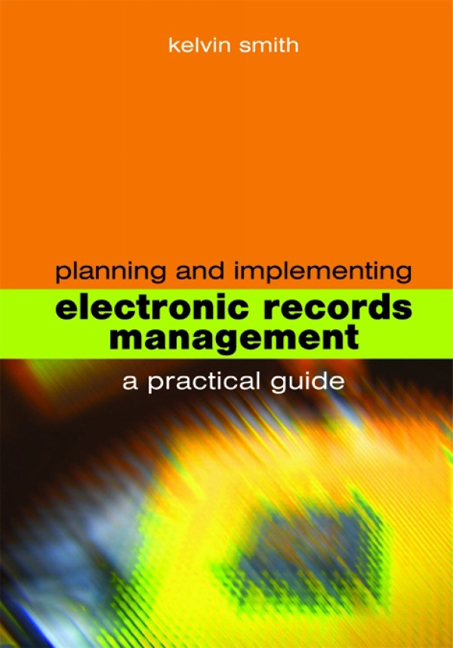5 - Information survey
from Part 2 - Design
Published online by Cambridge University Press: 08 June 2018
Summary
This chapter examines a prerequisite for implementing new records and information management systems – the information survey.
One of the key undertakings in the planning and implementation of new records management systems is the information survey. You may know it also by the name of ‘records audit’ or ‘information audit’. It is one of the most important processes that a records manager will undertake.
In general, an information survey provides an objective assessment of an organization's record- and information-keeping practices and procedures. It is the first and most important step in gaining control of records and information, providing a basis for both physical and intellectual management decisions. It is also a useful tool in assessing the level of knowledge of records management in an organization. Where information asset registers have been compiled, organizations may find these a useful source document for populating the information survey and they may even lead to significant savings in the survey process.
The objective of a survey is to produce a comprehensive list of all the records that your organization holds – paper, electronic, microform, etc. In the context of electronic records management the survey should not result merely in a list of application systems. It needs to gather information about each collection of records; in some cases, for example, the collection may be equivalent to an individual computer system, such as a database. In this context the term record collection is taken to mean a grouping of records with similar characteristics that can be managed together as a whole group; this would include making decisions for the group as a whole on filing, indexing, appraisal, migration and preservation. There are likely to be great variations between organizations but the important thing is to apply the term consistently within your own organization.
For less structured records the same office applications will produce records grouped in many different business areas. This may include electronic records in an unorganized or unmanaged environment, such as documents in general purpose folders on a network drive that have no discernible method of arrangement or, more likely, documents on a local hard drive of an individual or workgroup where the arrangement is not meaningful to others and does not relate to the corporate-wide scheme.
Information
- Type
- Chapter
- Information
- Planning and Implementing Electronic Records ManagementA practical guide, pp. 71 - 86Publisher: FacetPrint publication year: 2007
